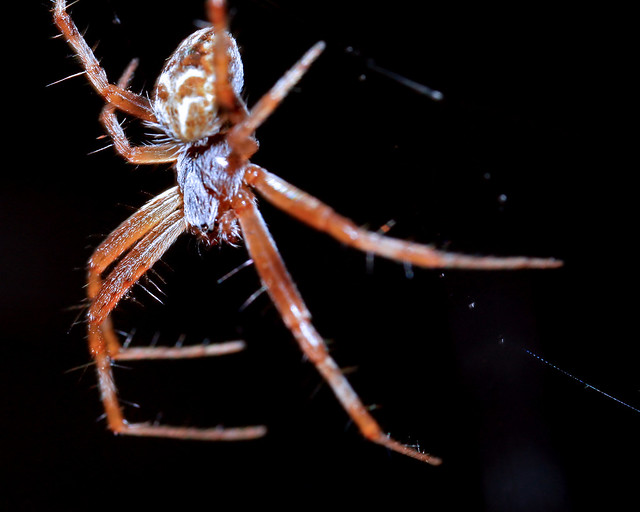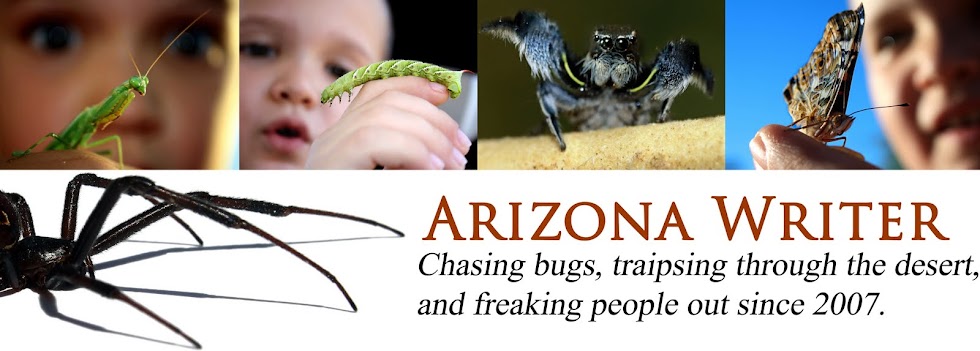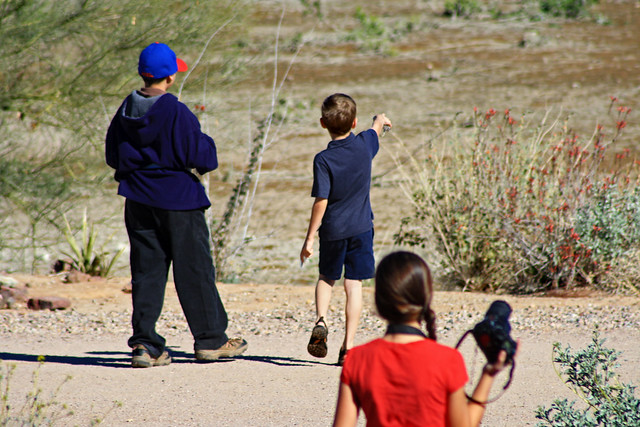 Another reason to geek out on 3/14
Another reason to geek out on 3/14If you're a dork (and if you're reading this you probably are), you know March 14 was Pi Day. What you probably didn't know -- I didn't until yesterday -- is that it was also National Save a Spider Day! Credit goes to my aunt, Heather, for passing on this reminder from Heloise. I guess it's only fitting, now that I've got spider pictures coming at me from across the country and even world, that I get my family and friends in on it too. You guys "celebrate" spider day weekly and sometimes daily on my Facebook wall on and in my inbox. You're all weird and wonderful. I shall become the spider queen and you will all be my spider-rescuing, spider-info-hoarding minions. Mwahaha!
I can't believe I didn't share this earlier
I'm not too big into Tumblr, but you all must follow this site, FACT: Spiders are Adorable, as long as they're posting content. Spider humor, spider fact tidbits, spider photos, spider macros (of both the close-up photography and humorous-text-having varieties), and all forms of spider love. Go see it.
Brown(ie) points: Brown recluse in the news
The brown recluse spider, Loxosceles reclusa, has been featured quite a bit in the news lately -- from the apparent spread of their territory and research to better define our understanding of their range, to recent cases like college student Nikki Perez, who was almost blinded due to a brown recluse bite. It's a medically significant spider, with unique and potentially quite harmful venom, and climate change could be affecting its range, so this is important stuff. Of course, there's quite a bit of difference between the predicted "possible migration of the spider by 2020" to new areas, and the melodramatic headlines ("America in Danger!") that I began seeing this week. This is what a brown recluse looks like, with a coin for scale. Its range is the Southeast to the Midwest. And if you have a giant brown spider on your wall, it's still probably not a brown recluse. Just, you know, be smart. Most people are never bitten by any spider, so don't start worrying about inevitable blindness/ear rotting/body-part-loss/general doom just yet.
Spider sensitivity training

I love this! The American Museum of Natural History is preparing to open an interactive exhibit, "Spiders Alive!" starting in July. Sensitive to the needs of the spiders, reaching out to the humans ... everyone wins. And we get to learn more about these amazing arthropods. I'm quite fond of Norman I. Platnick, the museum’s curator of spiders (although I'm also quite jealous of his profession). A few quotes:
Of the new exhibit, (Mr. Platnick said), “I’ve always argued that it would draw as many people as the dinosaurs, if not more.”and
Mr. Platnick, who has been at the museum since 1973, had long lobbied for a permanent hall devoted to spiders, insects and other arthropods. Not having one, he said, “is a major gap for a major natural history museum.”I'm glad to see arachnids have such an awesome advocate. Now who wants to pay for me to go to the exhibit in July?
Spiders look bigger to arachnophobes
Yes, I saw the recent article. My husband agrees wholeheartedly, and feels vindicated for the many incidents in which I may have implied he's a big baby for being afraid of something half the size of his pinky fingernail. I don't know, though. I see a sea of emerald sparkles in a jumping spider's eyes, and a veritable forest of hair on its back. Maybe it's just fixation that makes the spiders appear massive.
My husband doesn't particularly care why. They're huge, according to him.
Oh, well. I've seen him watching them and photographing them when he thinks I'm not looking. And he does know there's not an army of invading brown recluses. It's a start.




